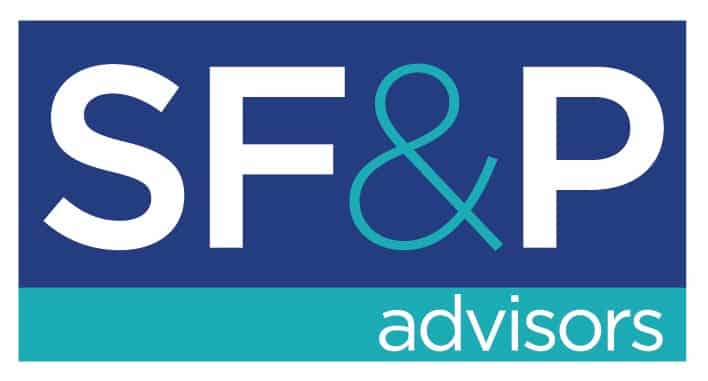While some strategies may seem complex and time-consuming, others are surprisingly simple yet effective. By implementing the right tactics, you can enhance your site’s ranking and attract more organic traffic effortlessly.
Whether you’re a seasoned digital marketer or just starting with SEO, these practical insights will help you navigate the ever-evolving landscape of search engine optimization. Get ready to uncover actionable advice that will take your website from being lost in the depths of search results to shining brightly on the first page.
1. Understanding the Basics of SEO
There are some basic concepts you should grasp. Firstly, ensure your website has relevant and high-quality content that addresses the needs of your audience. This will help improve your site’s visibility on search engines.
Secondly, optimize your website by using relevant keywords in titles, meta descriptions, and throughout the content. This helps search engines understand what your site is about and rank it accordingly. Make sure your website is mobile-friendly since many users access websites from their phones.
Another important aspect of SEO is building quality backlinks from reputable sites to increase your site’s authority. This can be done through guest posting, collaborations with influencers, or creating shareable content that others would naturally link to. Remember to regularly monitor and analyze your website’s performance using tools like Google Analytics to track progress and make necessary adjustments for better results.
2. Strategic Keyword Research: Uncover the Hidden Gems
Have you ever wondered how search engines like Google decide which websites to show at the top of their search results? It all comes down to the power of keywords. Keyword research is a vital component of any successful digital marketing strategy, yet it’s a concept often overlooked or underestimated by many businesses.
One benefit of conducting thorough keyword research is that it helps you discover the most relevant target keywords for your niche. These are the terms that your potential audience is likely to use when searching for information related to your industry or products. For example, if you run a bakery, knowing that “best chocolate cake recipe” is a popular search term can guide your content creation efforts.
Another advantage of keyword research is performing a keyword gap analysis. This involves evaluating which keywords your competitors are ranking for but you are not. By filling these gaps in your content strategy, you can increase traffic to your website and potentially outrank competing sites in search engine results pages.
- Identifying relevant seed keywords leads to discovering more specific long-tail phrases.
- Understanding high-volume keywords enables targeting popular search terms with significant traffic potential.

3. Understanding What Makes Content Resonate
When creating SEO tips, focus on crafting high-intent content. Your goal should be to provide new, relevant content that offers value to your readers. By consistently producing high-quality material with a purpose, you can attract more visitors to your website.
One way to ensure the quality of your content is by demonstrating your expertise in the field. Choose topics that showcase your knowledge and experience, making it easier for readers to trust the information you provide. Use precise and impactful words that keep readers engaged and eager for more.
To make sure your audience keeps coming back for more, consider incorporating various types of media into your content. Including relevant images, videos, or infographics can enhance the overall reading experience for your viewers. This not only makes the content visually appealing but also helps in conveying complex ideas or concepts effectively.
- Consistently produce new and valuable content
- Showcase expertise through chosen topics
- Incorporate different types of media like images and videos
Crafting high-quality SEO-focused content involves providing fresh insights on various subjects while showcasing expertise through well-chosen topics and engaging visual elements like images or videos.
4. Strategic Use of Links for SEO
Now, let’s delve into SEO tips focusing on the strategic use of internal and external links to boost your website’s visibility. These are hyperlinks that connect one page of a website to another within the same domain. By incorporating internal links in your content, you can guide visitors to other relevant pages on your site, enhancing user experience and keeping them engaged longer.
Internal links help search engines understand your site’s structure better. They establish a hierarchy on your site, allowing you to spread link equity (ranking power) across web pages. For example, when writing a blog post about “Top Upgrades Homeowners Should Consider,” you could include an internal link directing readers to a related article on “A Guide to Luxury Home Amenities” This provides valuable information and encourages users to explore more content on your website.
External links can significantly impact a website’s search engine rankings and visibility when used strategically. By linking to authoritative and relevant websites, a site can signal its credibility and expertise on a particular topic to search engines, leading to higher rankings.
However, website owners must ensure that their external links are from reputable sources and add value to the user experience. Search engines are increasingly sophisticated at detecting manipulative link-building practices, so genuine, high-quality external links are key. Alsoe, strategic use of anchor text in external links can improve search engine ranking for specific keywords without over-optimizing or appearing spammy.
5. Essential On-Page SEO Tips
Optimizing your on-page content ranks pages higher in search results. One essential element is using relevant keywords strategically throughout your content. Incorporating primary and secondary keywords naturally can boost your visibility online.
Another vital aspect of on-page SEO is identifying and addressing zombie pages on your website. These pages do not contribute to your site’s traffic or rankings, often diluting the overall quality of your website. By removing or updating these irrelevant pages, you can improve the overall health of your site.
Utilizing descriptive and engaging titles and meta descriptions for each page can also enhance your SEO efforts. These titles should accurately reflect the content on the page while enticing users to click through.

6. Optimizing Website Structure
Your website architecture influences how search engines view and rank your site. By organizing the content effectively, you can improve your overall SEO strategy.
A well-structured site helps search engine algorithms understand your content better. Start by creating a clear hierarchy with categories and subcategories on your new website. Ensure that each page serves a specific purpose related to user search intent.
- Organize content logically
- Create user-friendly URLs
- Use directories effectively
Properly structuring URLs is essential for SEO success. Make sure they are short, descriptive, and contain relevant keywords. Avoid using generic URLs that do not reflect the page’s content or purpose, as this can confuse both users and search engines.
- Use keywords in URLs
- Keep URLs concise and readable
- Avoid generic
7. Optimizing for Mobile Devices
Your website needs to be responsive and easy to navigate on smartphones and tablets. This is essential because a large number of users access websites through their mobile devices.
Mobile optimization can improve user experience, leading to increased time spent on your site and higher chances of conversion. Visitors can easily find what they are looking for without getting frustrated by slow loading times or distorted layouts. A well-optimized mobile site can also positively impact your search engine rankings.
8. Enhancing User Experience Through Core Web Vitals
Optimizing for core web vitals can significantly improve user experience and boost your site’s visibility. Improving loading speed is vital for a better user experience. Optimizing images, leveraging browser caching, and minimizing unnecessary code can enhance your site’s performance.
Ensuring mobile speed is another key aspect of enhancing user experience through core web vitals. Make sure your website passes mobile scores to cater to the increasing number of users accessing the internet via mobile devices.
9. Monitoring and Analyzing Your SEO Performance
You need to track various metrics to understand how your website performs in search engines. By doing this, you can identify what’s working well and what needs improvement.
One effective way to monitor your SEO performance is by analyzing statistics such as organic traffic, keyword rankings, bounce rate, and click-through rates. Utilizing tools like Google Analytics or a free SEMrush account can provide valuable data insights into how users interact with your site. For example, tracking the number of visitors coming from search engines can help you gauge the effectiveness of your SEO strategies. Monitoring keyword rankings can give you an idea of which keywords are driving traffic to your site and which may need optimization.
- Keep track of metrics like organic traffic
- Use tools like Google Analytics for data analysis
- Monitor keyword rankings regularly for insights
Analyzing these key metrics allows you to make informed decisions about improving your website’s visibility in search results. By understanding the data behind your SEO efforts, you can tailor your strategies to drive more organic traffic and improve overall performance.
10. Staying Updated with SEO Trends
As search algorithms constantly undergo updates and innovations, staying ahead of SEO trends is essential for maintaining a competitive advantage. Just as homeowner trends evolve each season, so do the intricacies of SEO, making it imperative for marketers and business owners alike to remain vigilant in keeping up with the latest developments.
One way to stay updated is by monitoring your competitors. Analyzing what they are doing can provide valuable insights into new techniques or approaches that you can incorporate into your SEO strategy. Keeping an eye on industry news and updates from reputable sources can help you anticipate upcoming changes and adjust your tactics accordingly. For example, if a search engine introduces new ranking signals, being aware of these changes early on can give you a competitive edge.
Another essential aspect of staying current with SEO trends is understanding the different types of strategies available. Whether you’re optimizing for voice search, focusing on local prospects, or creating high-quality content, knowing the various options allows you to choose the most effective approach for your website. Experimenting with different techniques and observing their impact on your site’s performance can help refine your strategy.
- Monitoring competitors
- Keeping track of industry news
- Understanding various types of SEO strategies
- Experimenting with different techniques
Continuously educating yourself about emerging trends ensures that you remain proactive rather than reactive in optimizing your website for search engines’ evolving algorithms. Adapting swiftly to change puts you in a better position to attract organic traffic and improve your online visibility.
Closing Thoughts
You’ve now got the lowdown on SEO essentials, from mastering keywords to optimizing your site’s structure and content. Remember, SEO isn’t a one-time deal; it’s an ongoing journey of tweaking, analyzing, and adapting. Keep your finger on the pulse of SEO trends, test what works for you, and stay agile in this ever-evolving digital landscape.
So, gear up, dive into the world of SEO armed with these tips, and watch your online presence soar. Your website’s visibility is within your grasp—time to unleash its full potential! Now go forth and conquer the SERPs!



















